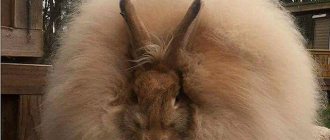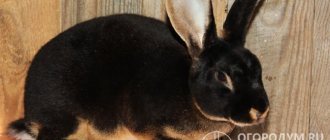Black ornathus or black phantom (Hyphessobrycon megalopterus) is a popular and unpretentious aquarium fish; many aquarists consider black ornathus to be the most interesting of the tetras in terms of behavior. They are peace-loving fish, but sometimes the males start fights among themselves, but these are more like demonstration performances and they do without serious injuries.
Habitat in nature
Hyphessobrycon from the Ancient Greek οπελάσσων, meaning "smaller in stature", is used as a prefix, plus the common name Brycon. Megalopterus from Ancient Greek μέγας, meaning "large", and πτερόν, meaning "fin", presumably in reference to the enlarged dorsal fin in male specimens.
The black phantom (Hyphessobrycon megalopterus) was first described in 1915. It is found in South America, in the upper reaches of the Rio Madeira, the main branch of the western Amazon watershed in Bolivia and western Brazil, including its main tributaries Rios Beni and Mamore, as well as the upper Rio Paraguay in Brazil.
The water of these rivers has a clean and moderate flow and abundant aquatic vegetation. They live in schools and feed on worms, small insects and their larvae.
Typically found in quiet tributaries and pools, including ponds and small lakes, where it forms aggregations around areas of vegetation or submerged tree roots. Such places are rich in aquatic plants, with at least 280 species recorded, including representatives of genera popular in the aquarium hobby, such as Echinodorus, Bacopa, Ludwigia, Eleocharis and Salvinia.
A completely different ornatus
Elongatus ornatus - pseudotropheus elongatus (Pseudotropheus spec. elongatus ornatus)
pseudotropheus elongatus (Pseudotropheus spec. elongatus ornatus)
Elongatus ornatus, also known as Pseudotropheus spec. elongatus ornatus, also has nothing in common with the ornathus of the Amazon River. It does not even live in running water in its homeland, but prefers the stagnant waters of the lakes of Mozambique (South-East Africa), where there are many rocky caves. The character of this cichlid is almost the same as that of the Golden Parrot Julidochromis.
These fish are unlikely to be able to get along with each other, but they won’t go so far as to commit murder: Pseudotropheus is aggressive enough to protect its cave from destruction, and defends its territory desperately and fearlessly, so the arrogant aggressor Julidochromis takes a big risk and, 99 percent of the time, he will have to retreat .
True, Elongatus ornatus has a very disgusting feature: jumping out from an ambush, in one fell swoop it bites off a long fin swimming past a fish, and rushes headlong back into the stones so as not to get the well-deserved “bream”.
Remember this when purchasing fish for an aquarium where a “striped guardian” already lives.
Share this article:
Owners do not always set up aquariums for fish, but, on the contrary, add them to an existing environment to complement the overall picture. Herbalists need small, peaceful, schooling fish that are careful with the soil and vegetation, but at the same time look organic. In this case, the choice of many aquarists is the characins, in particular Ornathus, and not without reason, because the nimble abode meets all the stated requirements.
Ornathus are representatives of the genus Hyphessobrycon (lat. Hyphessobrycon) of the Characin family (lat. Characidae). In nature, they live in warm, stagnant bodies of water in South and Central America. They are sometimes called tetras or phantoms because of their pale, translucent body.
There are several species of ornathus, and among them there are significant differences in color and behavior. But they still have quite a lot in common:
- small sizes;
- gregariousness;
- nature of nutrition;
- body shape.
Thus, phantoms have a high elongated body up to 4-6 cm long, slightly flattened on the sides, and on the back at the base of the caudal peduncle there is an adipose fin. The upper mouth helps to hunt insects floating near the surface of the water.
In the aquarium they behave calmly, in their swimming style they are similar to neon or thorns - they find darkened areas with a weak current, take their position and hover in it, periodically twitching their fins. In addition, they are characterized by territoriality, so you can often observe harmless fights among males, which are more reminiscent of games.
Content complexity
In general, an unpretentious and peaceful fish. One of the most popular aquarium tetras. Although the black phantom is not particularly bright, it stands out due to its behavior.
They are much less demanding on water parameters than their closest relatives - red phantoms, which differ from them in color.
Males are territorial and guard their space. When two males meet, a battle takes place in which there are no casualties. They spread their fins and try to show off their brightest colors to their opponent.
Description
The body has a typical tetra shape. When viewed from the side, it is oval, but at the same time compressed from the sides. The black phantom reaches a maximum body length of about 3.6 cm. Life expectancy in an aquarium is about 5 years.
The body color is transparent brown with a large black spot surrounded by an iridescent silver border just behind the gill cover. Males are not as brightly colored as females. The fins of the male are black, as is the dorsal fin of the female; The anal and adipose fins of the female are reddish in color. Females are more beautiful, with reddish adipose, anal and pectoral fins.
The veil-finned black phantom, apparently bred by captive breeders, is sometimes sold in the aquarium trade (the male has elongated dorsal and anal fins even in the wild form).
Notes
This species is popular in the aquarium hobby and is bred commercially in several countries. Sometimes a selection form with veil fins is found.
A fairly strong fish that can withstand various diseases relatively easily. Susceptible to ichthyophthyriasis and oodynia. It is believed that the parasites that cause these diseases usually enter the aquarium along with live food caught from water bodies where fish live. Invasion is promoted, in particular, by a sharp drop in temperature. Due to the dark coloration of the body and fins, damage to black phantom by ichthyophthyriasis is easily determined at an early stage. This allows you to take prompt action in a timely manner. During the treatment period for the black phantom, which lasts about 1 week, it is necessary to increase the water temperature in the aquarium by 2-3° C.
Feeding
They are omnivores, feeding on small invertebrates, crustaceans, filamentous algae, fallen fruits and the like in nature. Extremely unpretentious in feeding, black phantoms will eat all types of live, frozen or artificial food. The basis of nutrition can be high-quality flakes, and additionally you can feed with any live or frozen food, such as bloodworms or brine shrimp.
Diet of black phantoms
Black phantoms are omnivores, but they prefer protein foods. They eat bread crumbs, semolina, etc. only when they are very hungry; they take food from the bottom very reluctantly. The diet should be as varied as possible... The use of dry food is kept to a minimum. The presence of small insects in the diet has a positive effect on the condition of the fish - they spawn more often and more willingly.
It is also interesting that prolonged keeping of adult fish in fairly hard water (10-15dGH) does not have a negative effect on reproductive function, which casts doubt on the prevailing opinion among aquarists that producers of soft-water characinids become sterile when kept in hard water .
The genus Megalamphodus has about a dozen species, of which only two species are regularly imported to Russia: black (Megalamphodus megalopterus) and red (Megalamphodus swegfesi) phantoms.
Keeping in an aquarium
Black ornathus are unpretentious, but it is better to keep them in a flock of 7 or more individuals. It is in it that they can open up.
They are very active fish and the aquarium should be quite spacious, about 80 liters or more. Especially if you have a decent flock.
Ideally, they need soft water for maintenance, but they have perfectly adapted to local conditions and tolerate different parameters well.
An aquarium with black phantoms should be well planted with plants, preferably with plants floating on the surface, but there should also be places where the fish can swim freely.
Subdued light and dark ground favorably emphasize the beauty of the black phantom.
Adding dried leaves will further enhance the natural feel, as well as provide additional cover for the fish and lead to the growth of microbial colonies as the leaves decompose.
The latter are beneficial as they provide an additional source of food for both adults and juveniles, while humic substances released by decaying leaves are also considered beneficial.
Aquarium care is standard - regular water changes, up to 25%, and filtration is desirable, with a moderate flow. Water temperature 23-28 °C, pH: 6.0-7.5, 1 - 18 dGH.
Ornatus - peaceful neighbor
The fish themselves are very, very peace-loving creatures: even males, during territorial disputes, only get closer, adopting a threatening pose - bending their bodies and spreading their fins widely, but it never comes to a fight or injury.
They get along with other peaceful inhabitants of the aquarium: cyprinids, thorns, gouramis, ancistrus or acanthophthalmus. They are generally good neighbors, always ready to team up if a new fish appears in the aquarium or they feel some kind of threat. But aggressive and large fish are pure evil for Ornathus!
50 liter aquarium 6-10 fish are enough for a 10 liter aquarium. One pair is quite enough. But in a flock they look much more interesting!
Ornathus love to frolic in free water, but they prefer to rest and hide in dense thickets of plants or in artificial caves and under driftwood. Therefore, the aquarium should be planted around the perimeter with various “grass”, artistically laying out the bottom with various stones with holes and putting in a couple of beautiful driftwood, and leaving the middle for the nimble ornatus to play.
And no need for bright light! – This fish loves partial shade, so the plants in the aquarium with ornathus need to be selected accordingly.
There are no problems with food at all! In the absence of bloodworms, tubifex and daphnia (live food), the ornatus will happily have breakfast and dinner with high-quality dry food.
It will be necessary to pamper a couple of ornathus with living organisms during the spawning period.
Ornathus is also not particularly picky about water: it should be at least 21-23*, well filtered and saturated with oxygen. And if you also change 1/5 of this water every week and enrich it with peat extracts, then for this you will get a special bonus from Oranthus in the form of bright, rich colors and a long life of up to 5 years.
“Oranthus - family Characinaceae” is a collective name for several species of these fish, which, in essence, differ from each other only in color. Everything else - structure, feeding, care, maintenance and reproduction - are absolutely the same, but the red ornathus (Megalamphodus sweglesi) is especially beautiful; the second name of this fish is the Red Phantom!
Compatibility
The Black Phantom is a very peaceful fish and is well suited for community aquariums. As already mentioned, you need to keep them in a flock of 7 or more individuals, then the ornathuses open up and are noticeable. Unlike other tetras that prefer to live in large schools, they also do well if kept in a group of four or five, making them suitable for small aquariums.
If there are many males in the pack, they will behave as if they are fighting, but they will not hurt each other. Try to buy a mixed flock of at least 8-10 individuals, as this species forms dominance battles in which males compete for the attention of females, and therefore displays more interesting behavior and better coloration.
This behavior is usually a clarification of the hierarchy in the pack. It is better to keep them with small and peaceful fish, for example, cardinals, lalius, marble gouramis, black neons.
Sex differences
Males have longer fins than females, and when they are ready to spawn, the females become plumper. But the biggest difference is their color. The adipose fin, located on the upper part of the body behind the large dorsal fin, is much more visible in females than in males because it is red in females and gray in males. The dorsal fin of the female has a more intense black color than that of the male. When the fish is in the breeding state, the coloring of both sexes becomes more distinct, and the male displays his black fins more clearly.
Breeding
The spawning area should have a lot of floating plants and twilight. It is better to avoid using soil, as this makes it easier to care for the fry.
Fish selected for breeding are fed generously with live food for a couple of weeks. But with the beginning of spawning, you can not feed the fish or give them a minimum of food.
The stimulus for the start of spawning is a decrease in pH to 5.5 and soft water around 4 dGH. The easiest way to obtain such parameters is using peat.
The male begins a complex courtship ritual, which results in the female laying up to 300 eggs. Since the parents can eat the eggs, it is better to put a net or small-leaved plants on the bottom.
After spawning, the pair must be removed. After a couple of days, the eggs will hatch into a fry, which needs to be fed with very small food, for example, ciliates, until it begins to take artemia nauplii.











